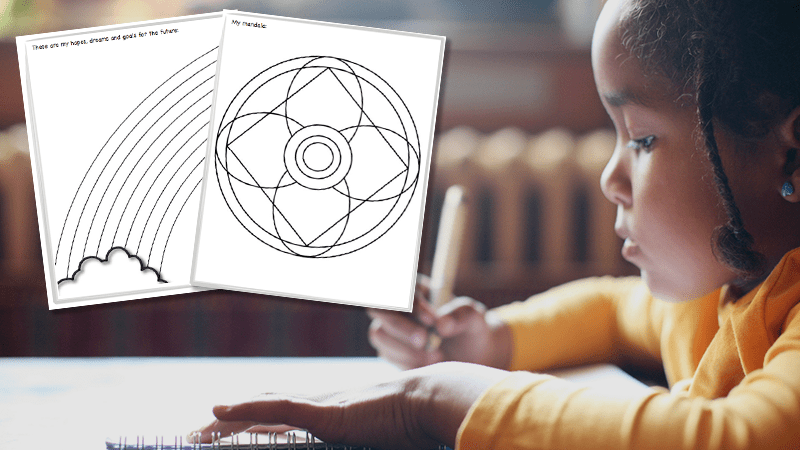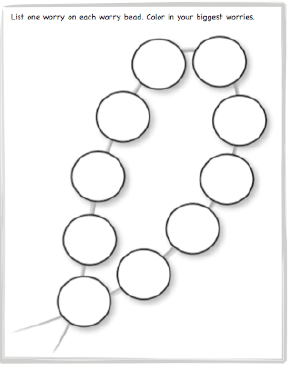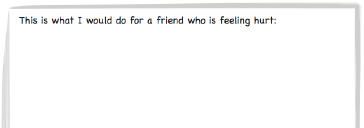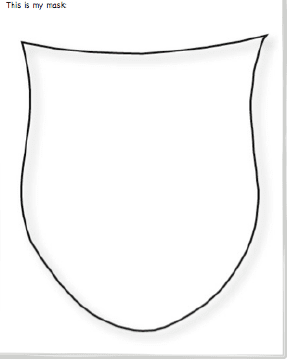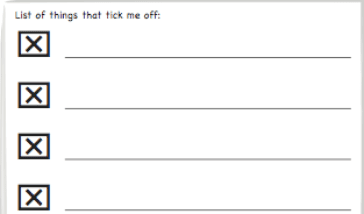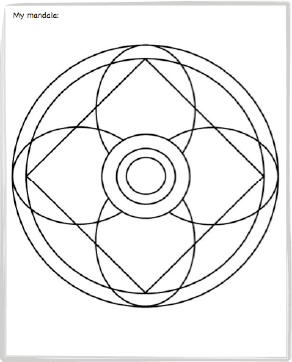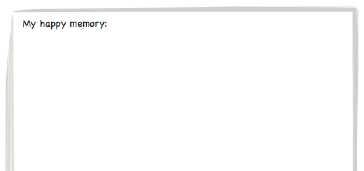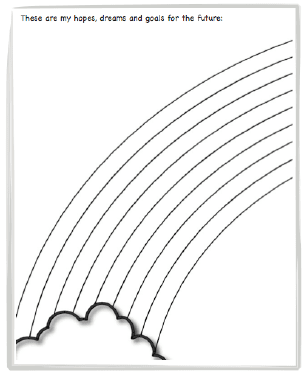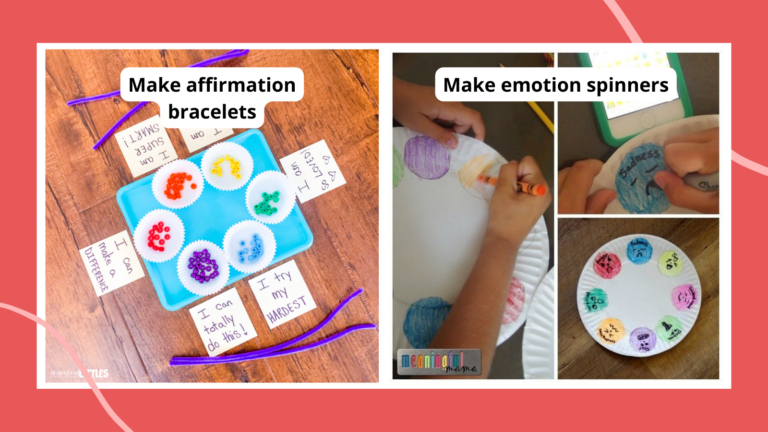As teachers, we want to help our students when they’re scared or stressed, but sometimes it’s hard to know exactly what to do or how we can take on the big emotions in the short time we have with our students each day.
Here are seven quick, easy activities from The National Institute for Trauma and Loss in Children, a program of Starr Global Learning Network that can help kids manage uncomfortable or overwhelming emotions. Want more? Check out this list of social-emotional books.
Whether students are dealing with a falling out with friends at school or a difficult divorce at home, this activity helps kids cope with their worries. They’ll be able to name their worries and create a safe place to keep them.
How it works: Give each student a Worry Bead Printable. Ask them to label each bead with something that they worry about, then color in the beads that represent their biggest worries. When they finish, share with them, “Now, instead of carrying all of your worries around in your head, you can store them right here on paper.”
“If My Friend Feels Hurt, I Would Help Him or Her By …”
Sometimes when kids are feeling overwhelmed, they may not know what to do to help themselves. By thinking about how they could help a friend, they can actually come up with a list of ideas to help themselves.
How it works: Brainstorm ideas with your students about how they might help a friend who is upset or overwhelmed. Then, give them time to make a list of things they could do or say to that friend. At the end of the session, help them understand that they can do and say the same things to themselves when they are feeling hurt—they can be their own best friend!
Sometimes when kids are scared, they just want to hide behind a mask so no one can see them. This activity gives your students an artistic outlet to deal with their fears.
How it works: Ask your students this question: “If you had a mask to hide behind from your fears, what would it look like?” Pass out a mask printable to each student and give them time to decorate it any way they choose. Then ask: “Since we can’t always hide, what are some other things we can do when we are really scared? What would make you feel a little bit less scared?” Give students time to respond to the questions in their journals.
“List of Things That Tick Me Off”
When kids are going through tough times, whether they are dealing with big stuff like a sick family member or something small like frustration with a project, they can understandably respond with anger and irritability. This activity will help kids articulate things that tick them off so that they can come up with constructive ways to deal with their anger.
How it works: Pass out copies of the printable shown below. Ask students to think about things that really make them angry and write them on the lines provided. Have a conversation about the harmful effects of holding onto anger—not only for ourselves, but for relationships we have with others. Together, come up with a list of strategies for coping with anger.
Coloring is wonderful outlet for relaxing and refocusing. Tapping into this resource will give students a useful tool to quiet their minds when they feel anxious or stressed.
How it works: Use this printable or download other mandalas for free at ColoringCastle.com. Put on soft, soothing background music, dim the lights, get out the art supplies and give students time to let their bodies de-stress and their minds wander as they color.
Revisiting a happy memory can help kids create a “happy place” in their minds where they can go when they feel down or discouraged.
How it works: Ask your students to think about a happy memory from their past. Invite them to close their eyes and picture the details—the colors and shapes, sounds, smells, and people that were part of this happy time. Then give them time to capture all of the details on the printable.
Sometimes it’s nice to take a break from the everyday and dream about the future. Thinking about the future keeps us moving forward, experiencing new things and growing!
How it works: Ask your students to think about their hopes, dreams and goals for the future, either short-term or long-term. Give them a copy of this rainbow printable to write a hope, dream or goal on each stripe of the rainbow and then color it in. Now they have a tangible reminder of all the happy things they have to look forward to in the future!
These activities are adapted from One-Minute Interventions for Traumatized Children and Adolescents by The National Institute for Trauma and Loss in Children (TLC), a collection of age-specific, sensory-based trauma intervention activities that utilize drawing activities and trauma-specific questions targeting the major emotions experienced in a traumatic event (e.g., anger, fear, hurt, worry, stress and powerlessness). If you have questions about these activities or need to refer a child who is experiencing trauma, you can reach out to The National Institute for Trauma and Loss in Children (TLC) by emailing TLC@starrtraining.org or calling 877-306-5256.
